SIDDHARTA-2 — The apparatus
4. The VETO systems
The VETO-2 System consists of 24 detector units, each composed of four (50 mm × 12 mm × 5 mm) plastic scintillators with Silicon Photomultiplier (SiPM) read-out [1]. The detector units are mounted directly behind the SDDs. Additionally, two pulsed LEDs are implemented per unit, allowing for an in-situ calibration of the Veto-2 detectors and for monitoring their performance, e.g. in terms of possible radiation damage. The VETO-2 system is dedicated to the suppression of signals originating from minimum ionizing particles (MIPs) produced in the final kaon absorption on the nucleons [2].

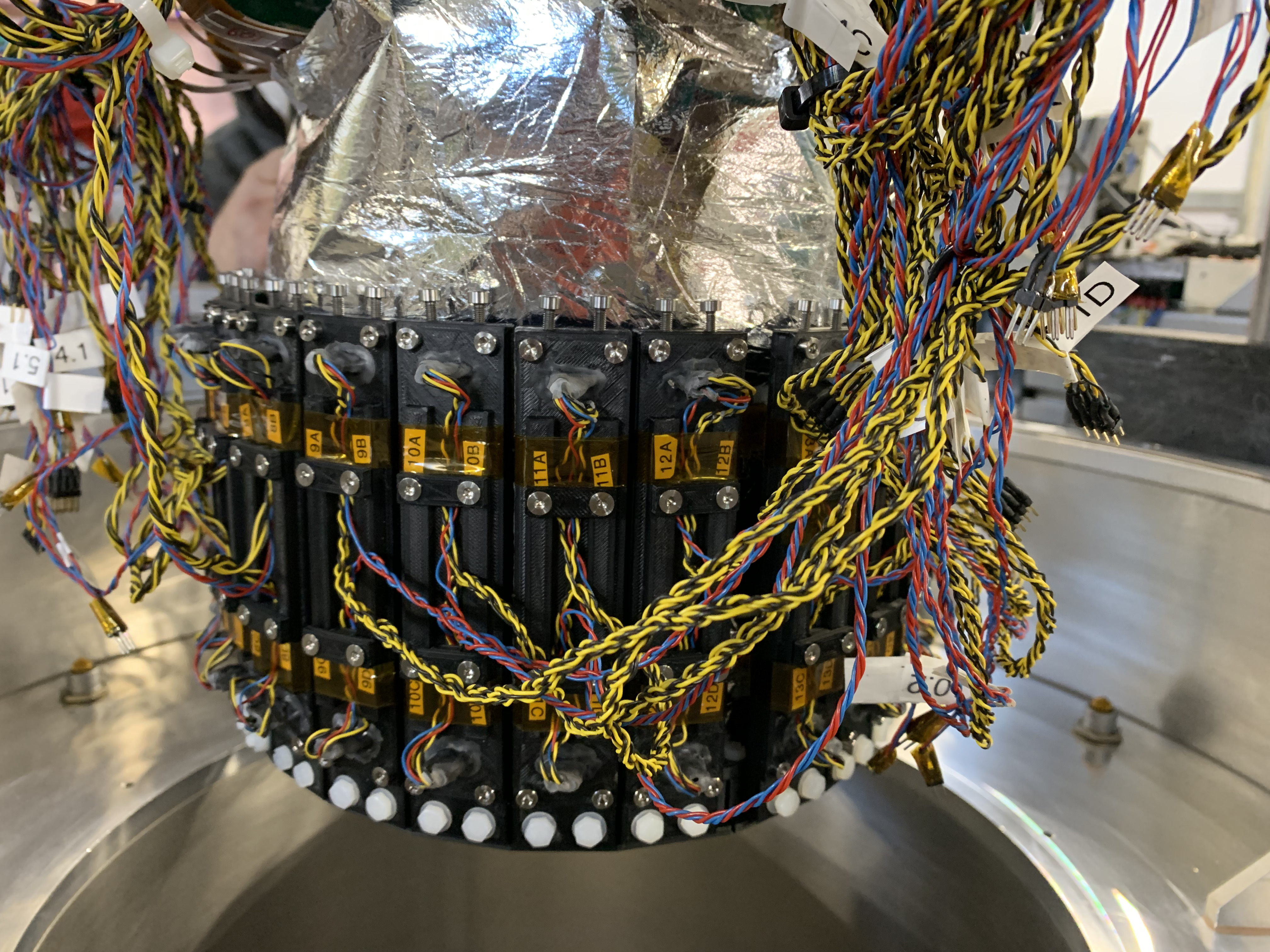
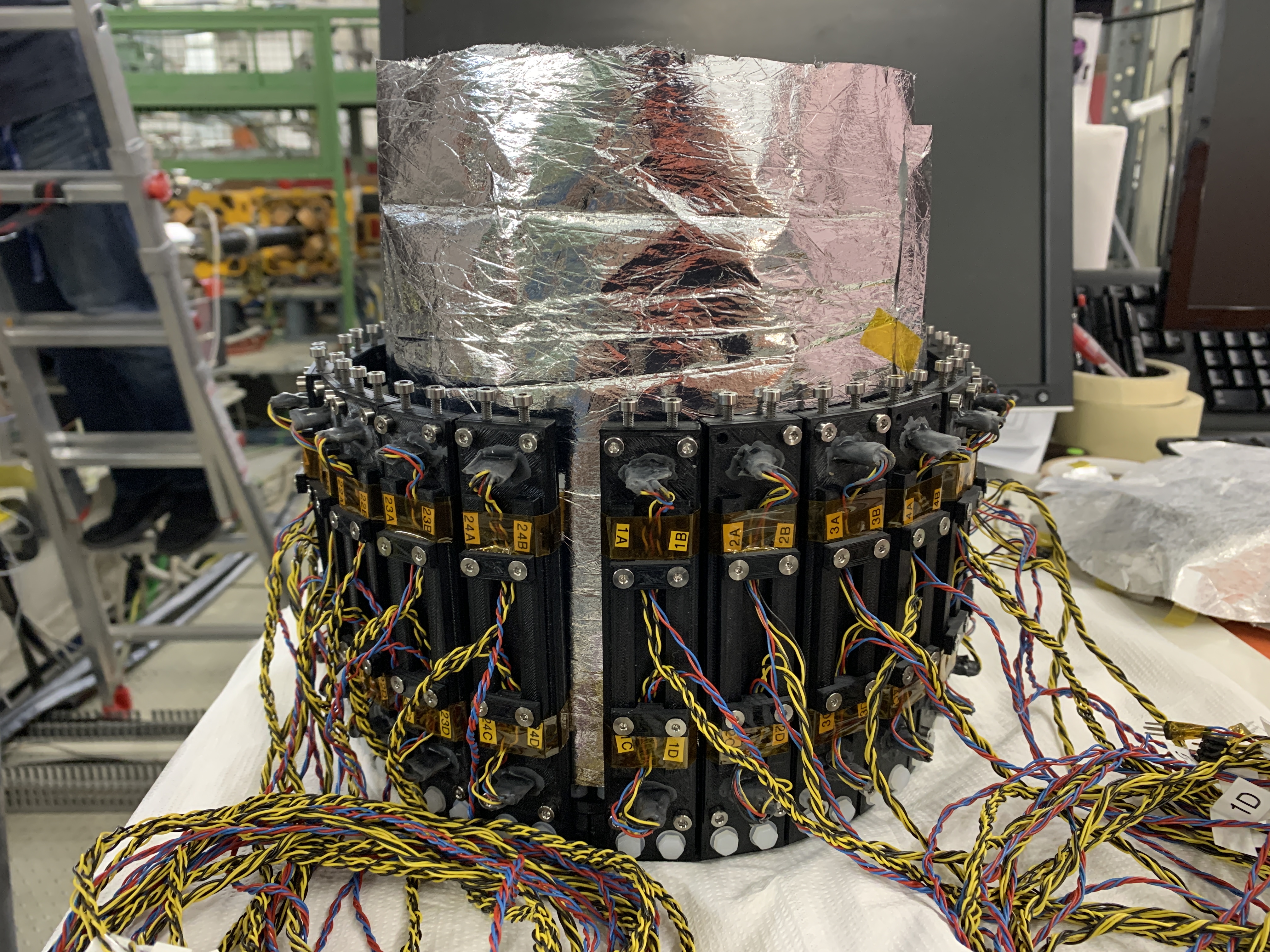
The VETO-1 System consists of 12 plastic scintillators (260 mm × 110 mm × 10 mm each) read by pairs of PMTs which externally surround the SIDDHARTA-2 vacuum chamber [1,3]. A system consisting of mirrors and light guides brings the signal out to the PMT scintillators on both ends, as shown in the picture below. In this configuration, a time resolution of (746 ± 53) ps (FWHM) is achieved. The main purpose of the VETO-1 is the distinction between signals originating from kaon stopped in the target gas, and kaon stopped in the surrounding materials. Additionally, it allows the rejection of the synchronous and asynchronous background produced by the interactions of the kaons with the setup materials, decays and nuclear absorption (synchronous background), and by the electromagnetic showers due to the particles lost by the beams and crossing the setup (asynchronous background).
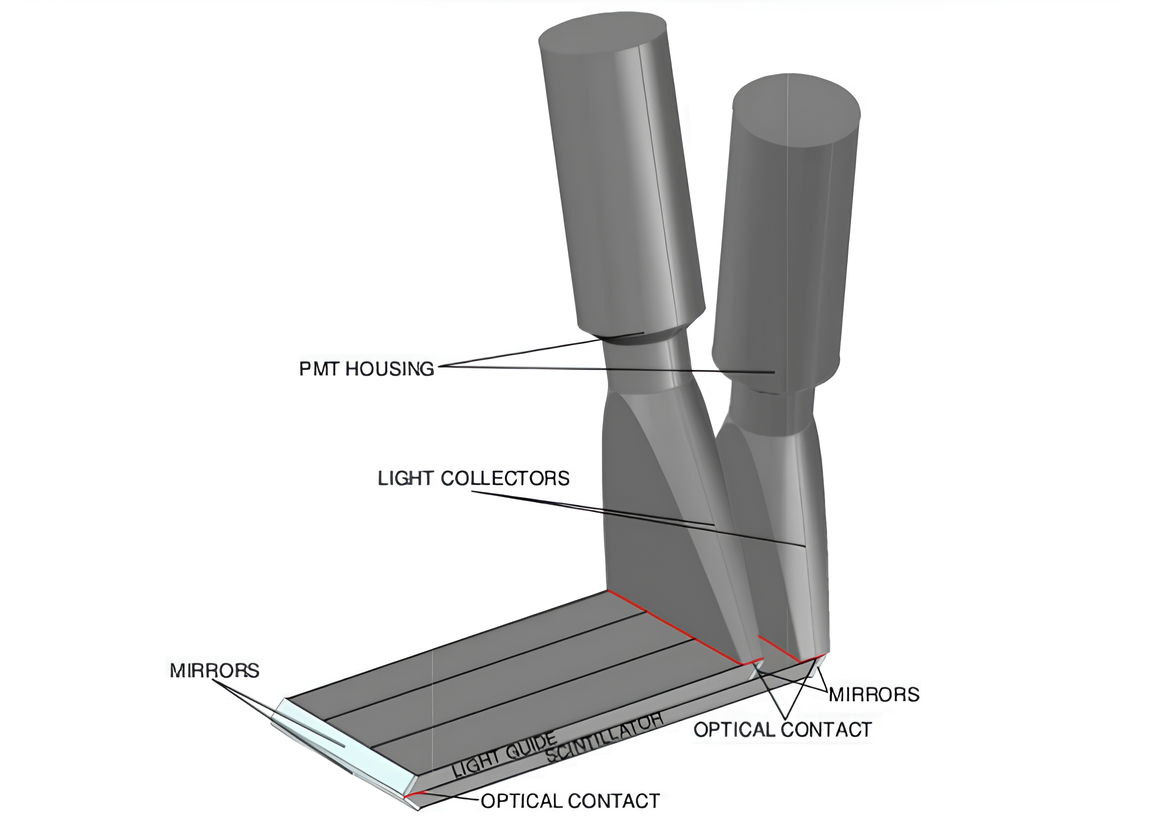
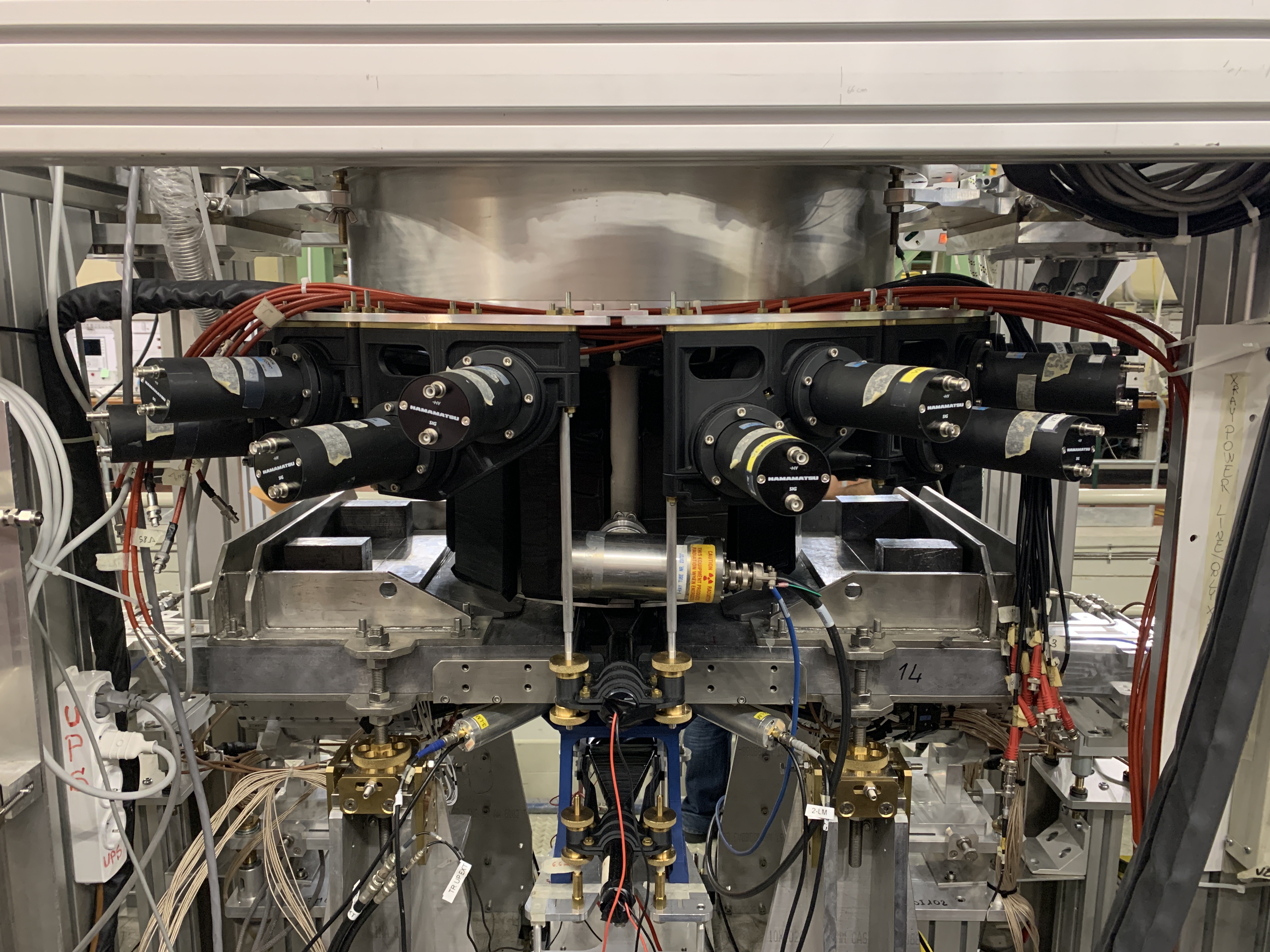
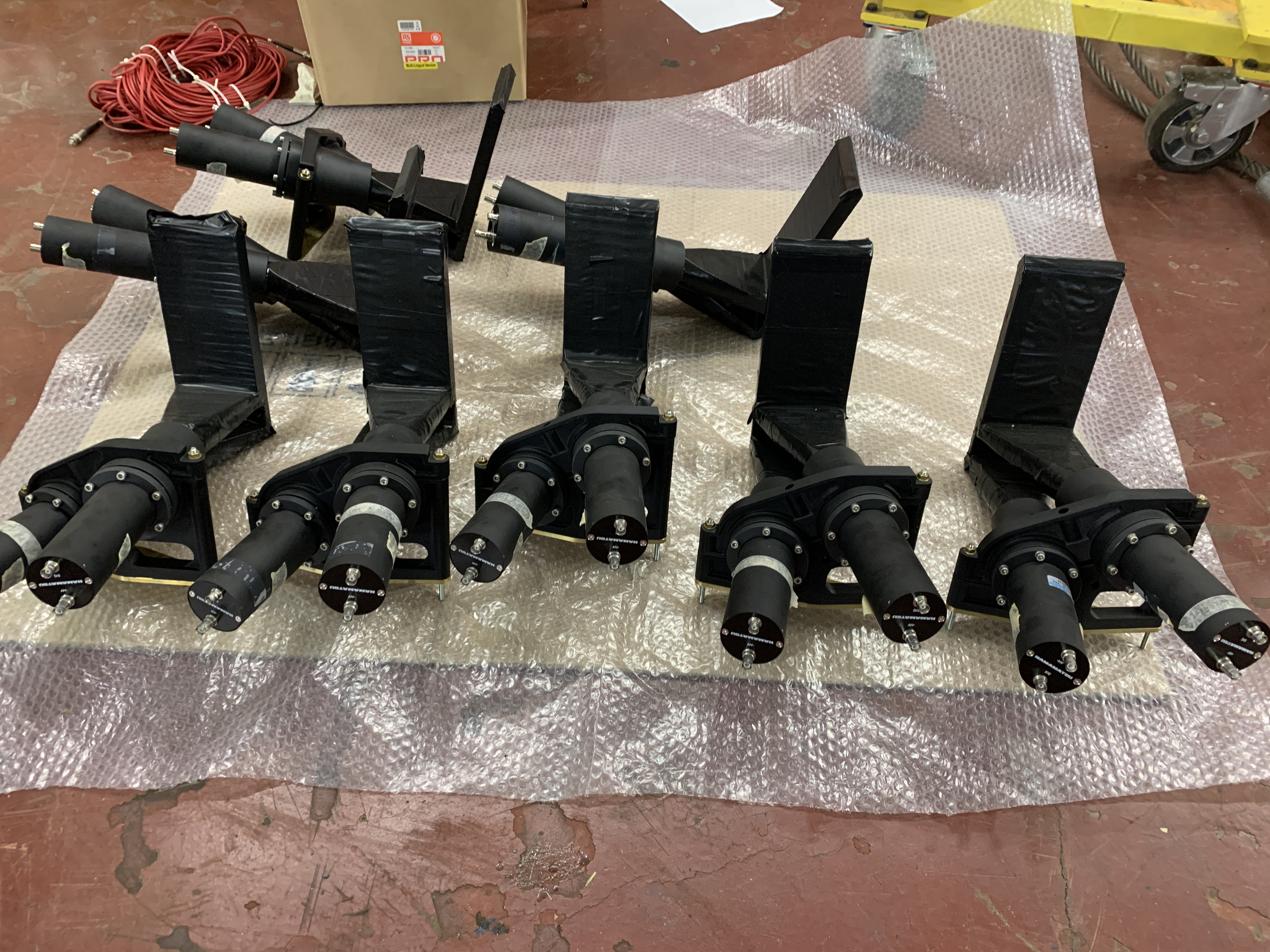
References
-
-
[1]. M. Tuchler et al., Main Features of the SIDDHARTA-2 Apparatus for Kaonic Deuterium X-Ray Measurements, EPJ Web of Conferences 262, 01016 (2022).
-
[2]. M. Tuchler et al., A charged particle veto detector for kaonic deuterium measurements at DAΦNE, J. Phys.: Conf. Ser. 1138, 012012 (2018).
-
[3]. M. Bazzi et al., Characterization of the SIDDHARTA-2 second level trigger detector prototype based on scintillators coupled to a prism reflector light guide, J. Inst. 8, T11003 (2013).
-
[4]. C. Curceanu et al., Kaonic atoms measurements at the DAΦNE collider: the SIDDHARTA-2 experiment, EPJ Web of Conferences 258, 07006 (2022).
-
